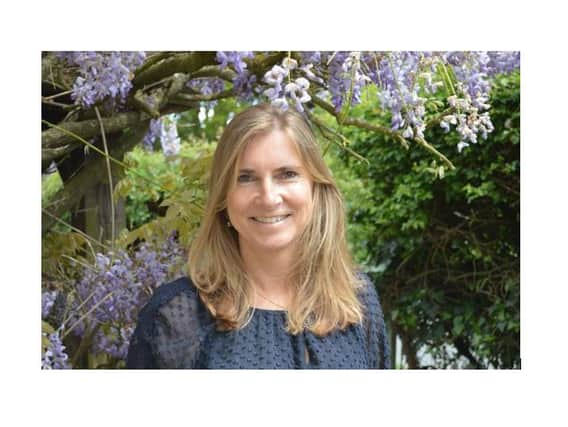A heatwave. A mystery. An obsession…


Fiona, who lives in Arlington and was born and raised in Eastbourne, offers a book set against the bohemian backdrop of Soho’s jazz basements and coffee shops of the late 50s, and a Sussex village during the long hot summer of 1976,
“A Song Unsung (available from Amazon) is a coming-of-age story about an impressionable teenage girl who falls under the spell of a beautiful singer with a mysterious past,” she explains.
Advertisement
Hide AdAdvertisement
Hide Ad“Soho 1958. Martha Palmer, an aspiring singer working in a coffee shop, is desperately short of cash. She’s been scouted by a photographer. The money’s good. But there’s a catch …
“Sussex 1976. Nothing much happens in 14-year-old Natasha James’ life. Her mother has taken to her bed and her father, the local doctor, is preoccupied with his patients. But when the magnetic Martha Palmer moves into her village, Natasha is drawn into a glittery world of extravagant parties, steeped in the embroidered rhythms of jazz.
“But who is the mysterious Martha Palmer? And why is she the keeper of so many secrets? Desperate to fill in the gaps of Martha’s past, Natasha uncovers a heart-breaking love story, the truth of which threatens to destroy all that she holds dear.”
The novel features some of the all-time great jazz standards.
Advertisement
Hide AdAdvertisement
Hide Ad“My late father, a gifted pianist, introduced me to the music of the Great American Songbook when I was a child, so I was already familiar with a lot of the tunes. He was a fan of Louis Armstrong, Fats Domino and Acker Bilk and a French jazz band called Les Rats de Caves whom he first heard play in the south of France. When I mentioned jazz was going to play a part in my next book, he was incredibly enthusiastic and kept asking me if I’d finished it. It broke my heart that he died before he had a chance to read it.”
As for 1950s Soho: “It was an irresistibly rich tapestry upon which to draw because it was such an exciting time to be young and living in London.
“The streets of Soho buzzed with the sound of jazz and rock ‘n’ roll played in late-night sweaty basements where beatniks danced with barefoot girls until the early hours.
“By day, teenagers with money to spare hung out in coffee shops, sitting at sticky Formica tables, drinking cappuccinos as the latest hits blared out of the jukeboxes. In the French, and the Coach and Horses, painters, boxers and actors, mixed with writers, musicians and prostitutes.
Advertisement
Hide AdAdvertisement
Hide Ad“There were delis, charcuteries, Algerian coffee stores, Italian, Greek, Indian, Chinese, German and French restaurants. The air was thick with the fug of cigarette smoke, and the notorious gangs, which controlled the gambling and protection rackets, prowled the streets. It’s very much a character in its own right.”
The novel offers two stories in set in different time frames.
“The narrative of each character echoes one another in that a chance meeting causes their lives to radically change direction. In Natasha’s case, I liked the idea that Martha is the person who dramatically alters her life. I also wanted to lift Martha out of one era and place her into another to show the woman she’d become. So often characters are left stranded at the end of the novel. By transporting her 15 years in the future, we see the impact her chance encounter with Bo Rivers had had.
“I chose 1976 because it is a wonderfully evocative year, forever remembered for its seemingly endless summer – a great backdrop for Martha’s many jazz parties. I was a teenager, like Natasha, so revisiting the searing heat, the music, television and fashion, of that era was wonderfully nostalgic too.”